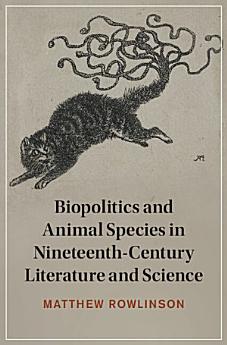Biopolitics and Animal Species in Nineteenth-Century Literature and Science
Matthew Rowlinson
Feb 2024 · Cambridge Studies in Nineteenth-Century Literature and Culture Book 147 · Cambridge University Press
Ebook
265
Pages
reportRatings and reviews aren’t verified Learn More
About this ebook
Principles of species taxonomy were contested ground throughout the nineteenth century, including those governing the classification of humans. Matthew Rowlinson shows that taxonomy was a literary and cultural project as much as a scientific one. His investigation explores animal species in Romantic writers including Gilbert White and Keats, taxonomies in Victorian lyrics and the nonsense botanies and alphabets of Edward Lear, and species, race, and other forms of aggregated life in Darwin's writing, showing how the latter views these as shaped by unconscious agency. Engaging with theoretical debates at the intersection of animal studies and psychoanalysis, and covering a wide range of science writing, poetry, and prose fiction, this study shows the political and psychic stakes of questions about species identity and management. This title is part of the Flip it Open Programme and may also be available Open Access. Check our website Cambridge Core for details.
About the author
Matthew Rowlinson is Professor of English at the University of Western Ontario. He is the author of Real Money and Romanticism (Cambridge University Press, 2010) and Tennyson's Fixations: Psychoanalysis and the Topics of the Early Poetry (1994). His edition of Tennyson's In Memoriam was published in 2014.
Rate this ebook
Tell us what you think.
Reading information
Smartphones and tablets
Install the Google Play Books app for Android and iPad/iPhone. It syncs automatically with your account and allows you to read online or offline wherever you are.
Laptops and computers
You can listen to audiobooks purchased on Google Play using your computer's web browser.
eReaders and other devices
To read on e-ink devices like Kobo eReaders, you'll need to download a file and transfer it to your device. Follow the detailed Help Center instructions to transfer the files to supported eReaders.







